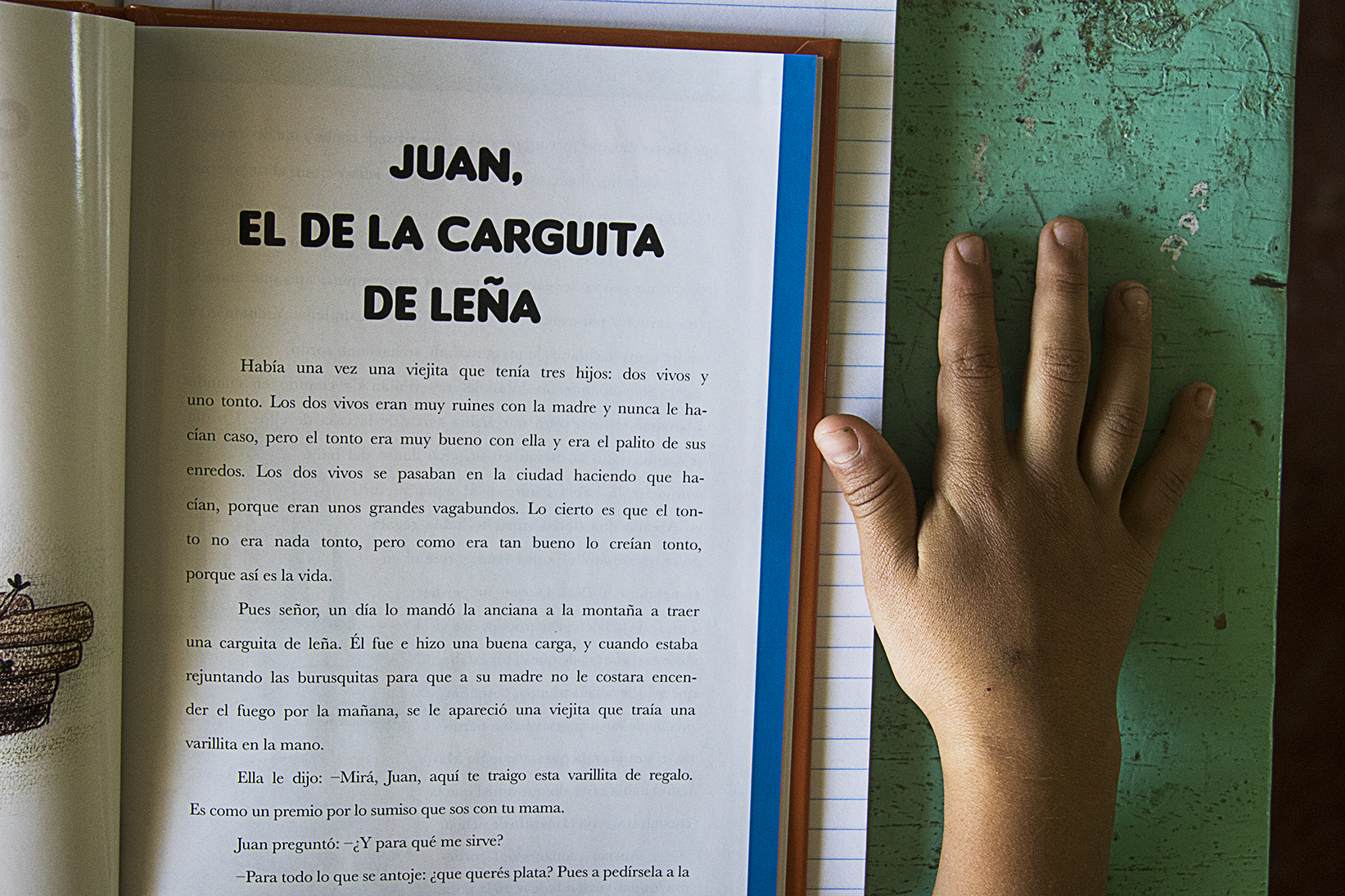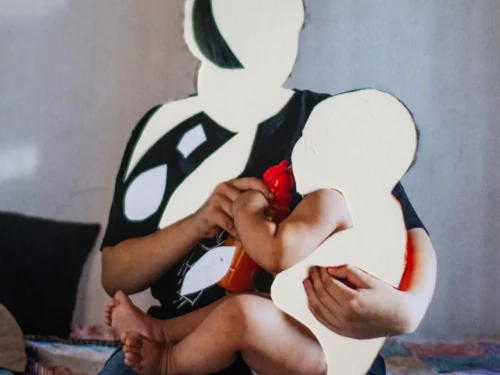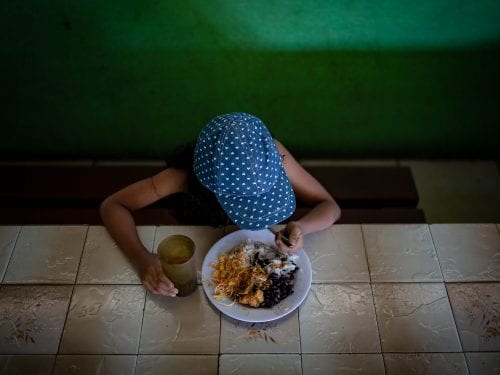
The National Children’s Board (PANI) inaugurated a new office in the canton of La Cruz on Friday, April 16. This branch will lighten the load of the Liberia office, located 58 kilometers (36 miles) away, which handled the cases of children and teens from La Cruz.
Now, 14 professionals in areas such as social work, psychology and law will face challenges to ensure the well-being of around 11,530 minors under the age of 19, according to population projections for 2021 from the National Institute of Statistics and Census (INEC).
La Cruz’s population experiences dynamics associated with immigration since it is a border area where people cross to and from Nicaragua, and the canton lags behind in general well-being, as it is the canton in the country with the fifth lowest human development index (just ahead of Buenos Aires, Los Chiles, Talamanca and Matina).
This index is calculated based on life expectancy at birth, expected and average years of schooling, and residential electricity consumption per person.
In addition, the new office is opening after years of attempts and struggles to consolidate in the border canton. The building in front of the Salvador Villar School in the Fatima neighborhood is rented and will offer investigative services, psychosocial care, administrative and judicial processes, as well as the development of socio-educational projects with the community.
Immigration, Human Trafficking and Smuggling
One of the priority challenges, according to PANI’s director for the Chorotega Region, Maribel Peña, is to look after minors from Costa Rica, Nicaragua and other regions (Africans, Cubans and Haitians) who are immigrating.
“When we met at the inter-institutional level, we talked about the need for PANI to have a permanent presence in La Cruz due to the highly vulnerable situations that happen because it’s a canton with a lot of intercultural situations, migratory movement and a [border] crossing place,” Peña told The Voice of Guanacaste.
At times, there are children who enter alone from Nicaragua, with people who aren’t their family or without documents.
Then a process has to be carried out to see if they are the parents or not, to protect the children,” Peña explained.
Immigration officials had to wait for an official from Liberia to go to La Cruz to attend to them, or vice versa, for immigration to take the minors to Liberia. “There was a very good coordination but now it’s different because PANI is there. Children don’t have to wait so long for professionals to arrive to attend to them,” she added.
In addition to the movement of Tico and Nicaraguan residents, care is also being given to people housed in the Migrant Care Center (CATEM- Centro de Atención para Migrantes), usually African, Cuban and Haitian families —including minors— fleeing from their countries and trying to get to North America.
Immigration dynamics, moreover, tend to be linked to situations such as human trafficking or smuggling, explained the regional director. “Being out of the area, we can’t identify and now, working in coordination with the police, it will be easier,” she added.
Teen Pregnancy
The regional director said that pregnancies of underage girls and teenagers are another challenge that PANI and other institutions in the canton will continue to attack.
According to an analysis of the most recent data from INEC, from 2019, done by The Voice of Guanacaste, La Cruz is the canton in the province with the second lowest birth rate for pre-teen and teenage mothers (with 16 pregnancies per 1,000 pre-teen and teenage girls 10 to 19 years old), surpassed slightly by Cañas (13 births per 1,000).
That hasn’t always been the case. Historically, La Cruz ranked among the Guanacaste cantons with the highest birth rate for pre-teen and teenage mothers, which makes it hard for them to continue their education.
In 2008, for example, 52 out of every 1,000 girls gave birth. In 2017, the canton ranked eighth out of 81 cantons in the country with the highest birth rate for minors aged 10 to 19 years old (39 out of every 1,000).
In 2018, the rate was reduced to 24, and in 2019 it went down to 16.
How did they accomplish that? Contraceptives and sexual and reproductive education could be the key, according to a previous analysis by The Voice of Guanacaste. In 2016, several institutions in La Cruz, including the municipality, the Ministries of Education and Health, PANI and the United Nations Fund for Population Activities (UNFPA) started a project that included sexual and reproductive education campaigns and providing contraceptives, mainly subdermal implants.
Having reduced it doesn’t remove it from being one of the priority issues for PANI and other institutions to continue working on.
In 2017, Alison Arias Huete showed the subdermal implant that she decided to have inserted after getting pregnant and having her baby when she was 16 years old. Like her, dozens of adolescents and women in La Cruz got this contraceptive method in the canton of Santa Cruz. Credit: Glorianna Ximendaz
Poverty and Education
Everywhere you look, La Cruz is a canton with social and economic stability challenges to overcome. Minors don’t escape vulnerability.
For example, the 2013 Childhood and Adolescence Well-being Index— the only and most recent one in the country that assesses material living conditions, education processes, and economic and home environment— places La Cruz just above the cantons of Talamanca, Upala, Guatuso, Los Chiles and Buenos Aires.
That’s not an isolated fact. According to the last national census taken in 2011, La Cruz is the poorest canton in the entire country, with 57.31% of households living in poverty and barely 18.8% of the population having completed secondary school. Most (28.6%) only completed elementary school.
This poverty index indicates a high level of social vulnerability for families, for children and for people without work,” regional director Maribel Peña pointed out.
Now the institution hopes to work more closely with preventive actions and care for violence against minors.
The Regional Unit for Immediate Attention— which began operating in the province in August 2020 and responds to emergencies— has assisted 91 minors in La Cruz in situations associated with sexual, emotional and physical abuse and mistreatment (24 ), neglect (29) and family conflicts (15).
A Long Time in the Making
As far back as 2012, PANI had a failed plan to more closely serve the underage population in La Cruz. At that time, with a budget of ¢210 million (about $420,000 at that time), they planned to build a shelter with capacity for 16 minors on land donated by the Municipality of La Cruz.
The project didn’t come to fruition because when they prepared the land for construction, “the contracted company found that there was a garbage dump and filling that in was more expensive than building the entire shelter,” said the institution’s regional director, Maribel Peña.
However, efforts never stopped because, according to Peña, regional leadership always had a notion of the need for that office and the institutions, organizations and communities in La Cruz, which Peña describes as “very active and socially coordinated,” continued with the task of opening a PANI branch in the canton.
“In 215, for example, there was a document signed by institutions and organizations in the canton. From there, analysis began and from the Liberia office, we sent a justification for the project,” Peña related.
“Since then, we have been working on this. In 2018, we sent a justification of job positions and at the administrative level, it has been a struggle to get the positions approved in that place.”
On March 15 of this year, the institution finally opened the office, fully equipped with computers, telephones and surveillance equipment. The new office in La Cruz joins the other branches that PANI has in the province of Guanacaste in Liberia, Cañas, Santa Cruz and Nicoya.







Comments